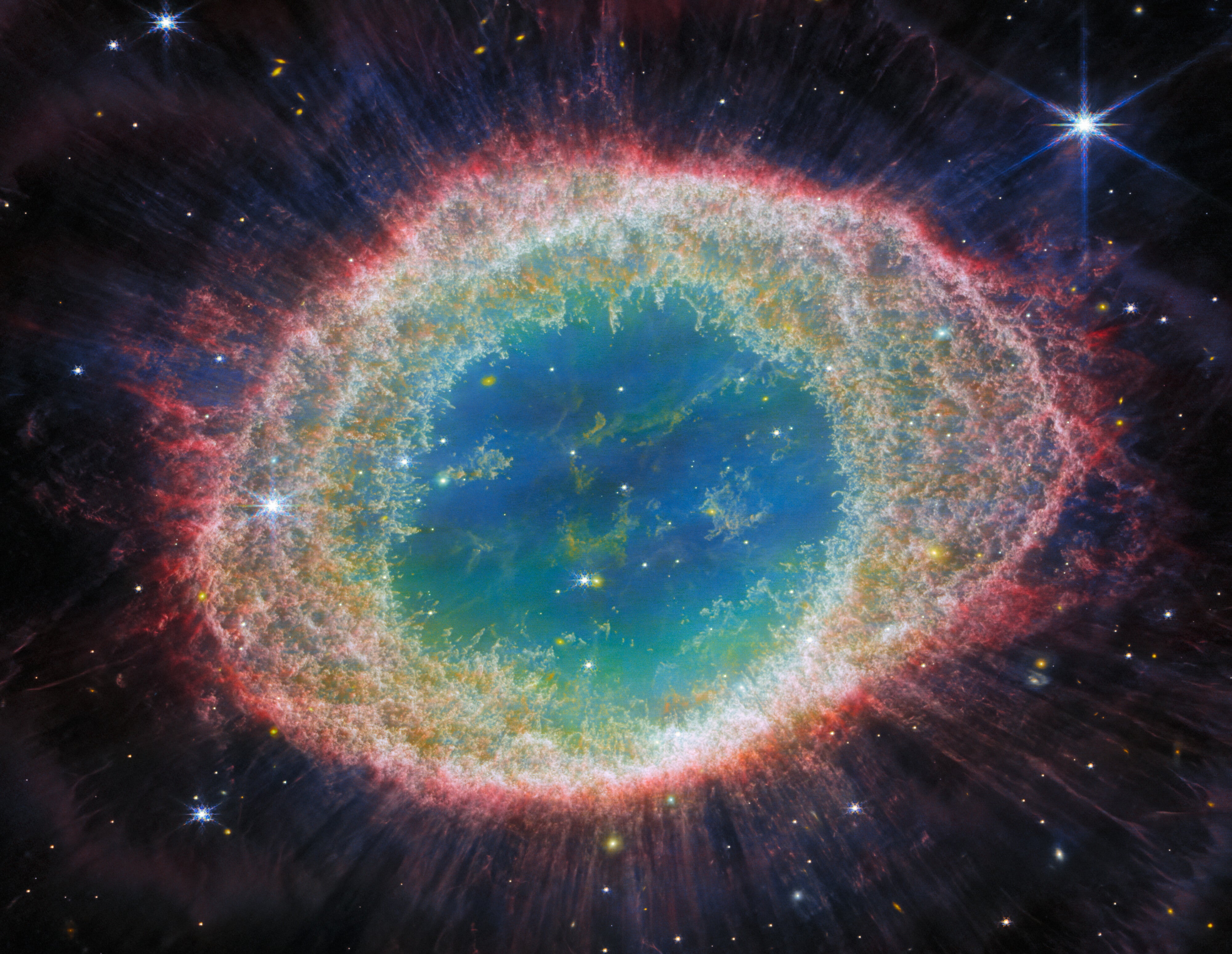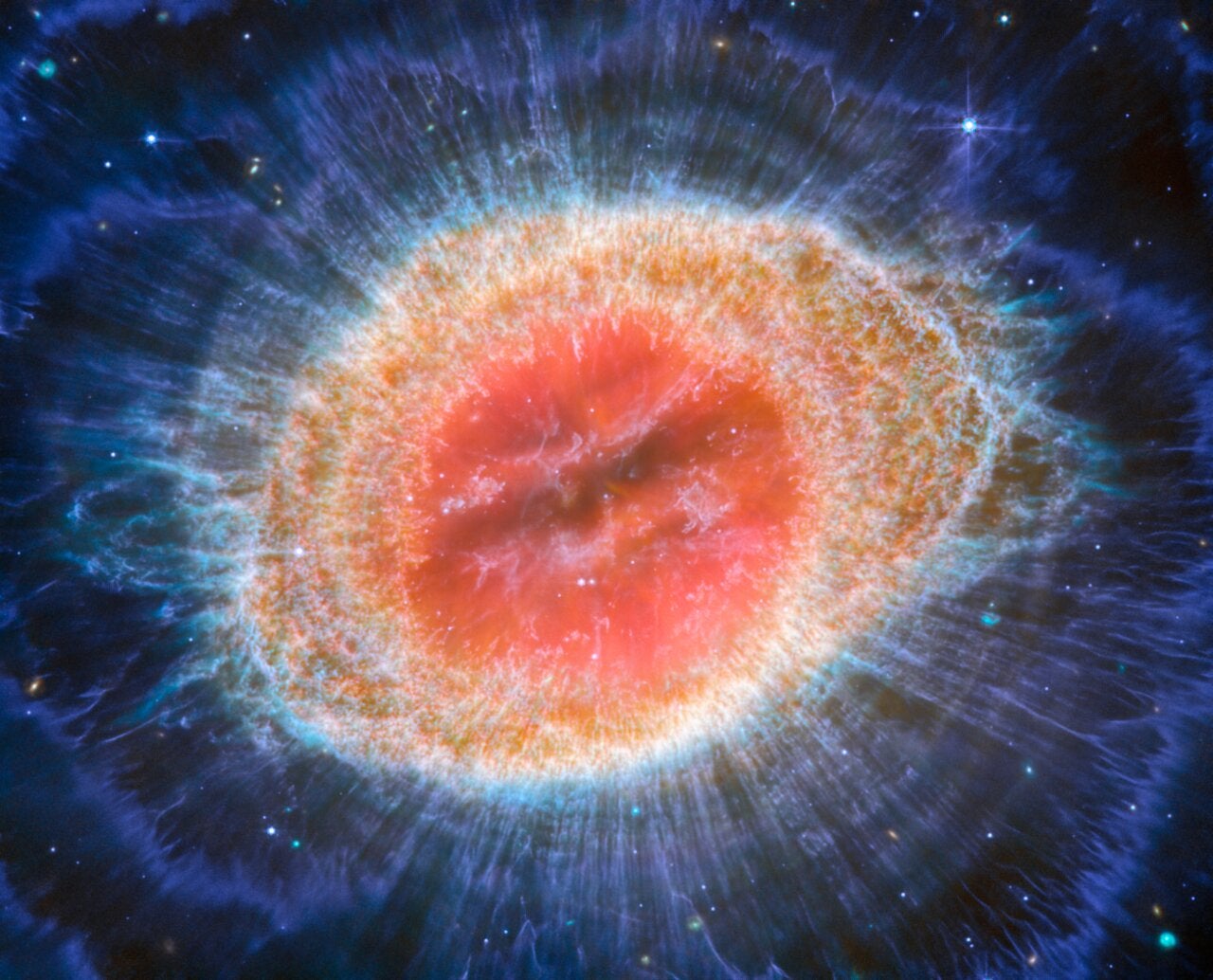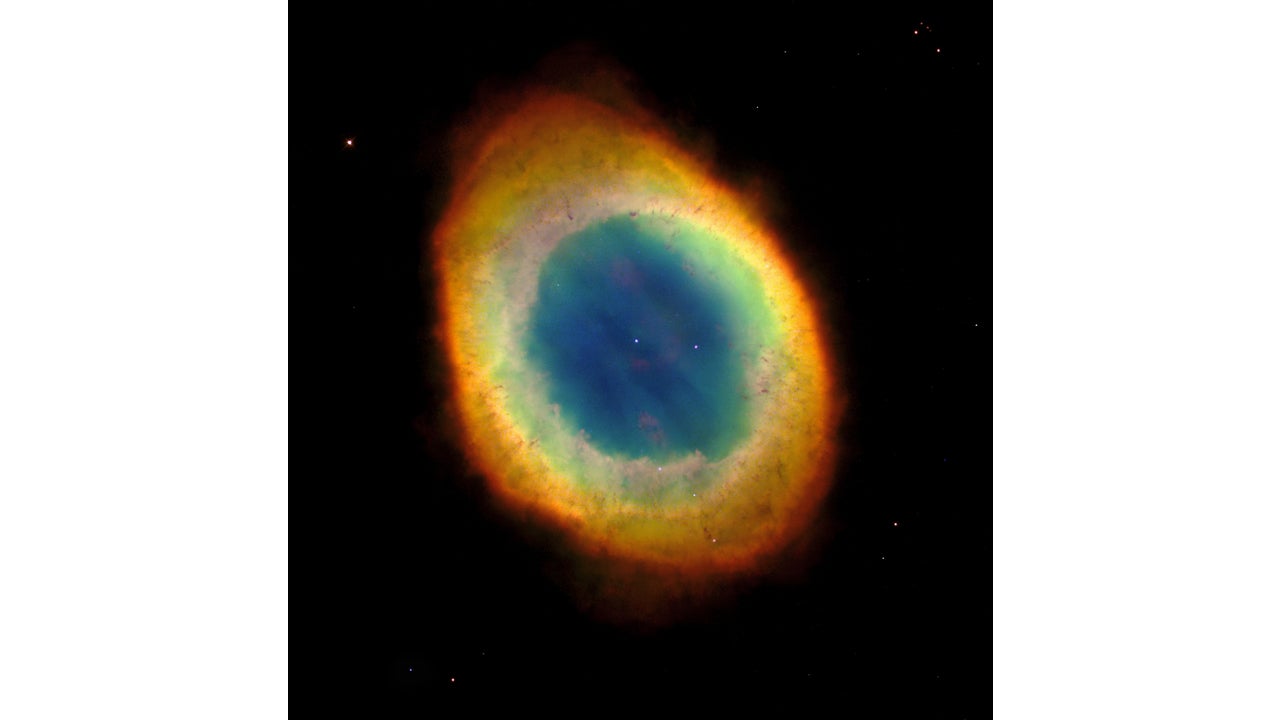
The James Webb Space Telescope (JWST) captured its first set of striking images of the Ring Nebula (M57), revealing detail and intricate features of the final stages of a dying star. Located about 2,200 light-years from Earth, the nebula is shaped like a distorted doughnut molded from the outer layers expelled thousands of years ago by an aging Sun-like star. The images are the most detailed of the object to date and will help astrophysicists study and understand the cosmic processes that sculpted the celestial phenomenon.
Detailed portraits
JWST’s Near-InfraRed Camera (NIRCam) and Mid-InfraRed Instrument (MIRI) captured the nebula’s subtle, luminous rings and wispy clouds. Inside the Ring Nebula is a white dwarf star surrounded by an inner halo of helium gas, encased by rings of oxygen and hydrogen, and then nitrogen and sulfur. The vibrant hues of the images are colorized to represent different chemical elements that emit light in different colors, like fireworks.
The image from NIRCam reveals the interior of the ring filled with hot gas, showing intricate details such as filamentary structures. At the same time, MIRI exposes the concentric, smoky threads crowning the outer regions of the nebula.
“These images hold more than just aesthetic appeal; they provide a wealth of scientific insights into the processes of stellar evolution. By studying the Ring Nebula with JWST, we hope to gain a deeper understanding of the life cycles of stars and the elements they release into the cosmos,” said Nick Cox, an astronomer and one of the team members who released the images at ACRI-ST, in a press release.

Colorful rings
A few thousand years ago, the Ring Nebula was a red giant shedding most of its mass. Now, scientists can use telescopes like JWST, which observed it on July 12, 2022, and August 4, 2022, to see the hot stellar remnant at the core heats the surrounding gas, causing it to glow.
The images are part of GO 1558, a JWST observing program designed to use the Ring Nebula as an astrophysical laboratory to watch how molecules and dust form and survive in irradiated environments such as planetary nebulae.
The observations will also help uncover how the structure formed in the first place. “[H]ow did a spherical star form such a structured and complicated nebulae as the Ring Nebula? A little help from a binary companion may well be part of the answer,” said Roger Wesson, an astrophysicist at Cardiff University, part of JWST’s Evolved StarS and their Nebulae in the JWST Era (ESSENcE) team, in an official blog.
Based on MIRI’s observations of the halo’s shape, interactions between the central star and a companion star may have sculpted the layers thrown off by the dying star. Astronomers estimate the distance between the two stars is comparable to the separation between Earth and the dwarf planet Pluto.
Building on previous work

Although this is JWST’s first close look at M57, it has been observed before with almost — but not quite — as much detail. In 1998, the Hubble Space Telescope showed elongated dark clumps of material weaved into the gas at the nebula’s edge. And a 2011 Hubble image allowed experts to construct a 3D model that showed the Ring Nebula’s true shape — more like that warped doughnut than a true ring.
Now, both telescopes are working together to unravel the Ring Nebula’s galactic riddles. Because Hubble images in visible light, details such as the spikes seen coming off the bright ring were barely visible; in MIRI’s infrared images, these lines are prominent. “We think these could be due to molecules that can form in the shadows of the densest parts of the ring, where they are shielded from the direct, intense radiation from the hot central star,” said Wesson.
See for yourself
First observed in 1779, the Ring Nebula has never failed to astonish and has long captivated earthbound onlookers. The nebula was spotted by Charles Messier and, shortly after, Antoine Darquier de Pellepoix as they were following the path of a comet through the constellation Lyra.
The Ring Nebula is easily seen on a clear evening with binoculars or — if you want to see its ringlike structure — a telescope.









